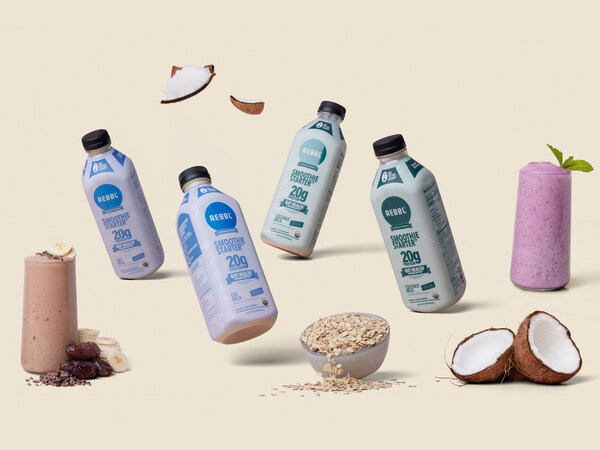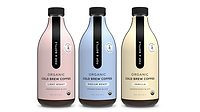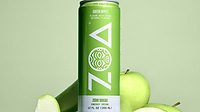2024 State of the Beverage Industry: Total milk looks to stabilize volume declines
Flavored milks continue to see growth in dairy drinks segment

Image courtesy of Mooala
Comprised of dairy, plant and all other milks, total milk is in hopes of its own revival as the category continues to be challenged following its spikes in volume and dollar sales in 2020.
John Crawford, senior vice president of client insights of dairy with Chicago-based Circana, noted in Beverage Industry's November 2023 issue, that in all, total milk is up 1.6% in dollars and down 3.2% in volume. Meanwhile, price per volume for total milk saw an increase of 5%.
“When you break it down between dairy and plant milk, dairy is down 1% in dollars and plant milk is up 4.3% in dollars,” Crawford explained. “Both are pretty small comparatively speaking to some other categories. For volume, dairy milk is down 2.9% and plant milk is down 6.7%. Price per volume, dairy milk is up 4% and plant is up 12%. So you start to get the story here a little bit.”
John Rodwan, editorial director at Beverage Marketing Corporation (BMC), Wintersville, Ohio, also called attention to disparity between dollars and volume.
“Milk volume declined again in 2022 with volume dipping below 5 billion gallons,” he said in Beverage Industry’s November 2023 issue. “Per capita consumption slipped to less than 15 gallons. Retail sales grew, but this was more reflective of high prices than anything else. All the major beverage categories saw sales growth last year, even those, like milk and fruit beverages, that declined in volume.”
Top refrigerated white milks (Individual brands)
Source: Circana, Chicago. Total U.S. multi-outlet with convenience store (grocery, drug, mass market, convenience, military, and select club and dollar retailers) in the 52 weeks ending May 29,2024.
Rodwan added that, following several years of volume growth, dairy alternatives saw their volumes decline.
“While oat milk continued to enjoy strong growth, all other segments ― including the biggest one, almond milk ― declined, resulting in an overall reduction in volume of almost 3%,” he explained. “Dairy alternatives remained a fraction of the size of the traditional liquid dairy beverage market with just over 500 million gallons.”
Circana’s Crawford noted that this performance could be tied to the fact that plant milks took on price increases after the rest of total milk.
“As dairy milk was coming up, they were closing that gap with dairy milk and then they couldn’t hold on much longer so when commodity costs and input costs started going up they started to take pricing,” he said in Beverage Industry’s 2023 issue. “Now they’re pricing faster than dairy milks.”
Yet, despite inflationary trends, price increases might be in the midst of an easing, Crawford noted.
“It’s starting to look a little more like 2019 where volume growth is small and dollar growth is softening,” he said in Beverage Industry’s November 2023 issue. “It’s starting to look a little more ― I don’t like to say a new normal because everybody’s been asking what the new normal looks like and I coined the phrase new abnormal because you never know what’s going to be next. But I will say, 2023 and going into 2024 it’s starting to look a little more similar to what we saw pre-pandemic.”
For dairy milk, despite its 2.9% volume decline, Crawford identified claims that are doing well for the segment.
“The pockets of growth are lactose free, which is up 15.7% in dollars and 6.3% in volume, … high protein claims up 13.8% and 3.9% dollars and volume, respectively,” he said in Beverage Industry’s November 2023 issue. “… Ultra-pasteurized, think ultra-filtered, but ultra-pasteurization leads to longer shelf life and all that kind of good stuff, but ultra-pasteurized as a claim is up 11.8% in dollars and 2.8% in volume so you’re starting to see these pockets of growth.
“Digestion claims, pre- and probiotic claims in particular, prebiotic and probiotic claims are up significantly in dollars and volume for dairy milk,” Crawford continued.
BMC’s Rodwan added that, despite its small size compared with white milk, flavored milk has done well.
“In the not-too-distant past, plain whole milk had been outperforming reduced-fat and fat-free milk, but more recently all the major types of white milk have been declining,” he said in Beverage Industry’s November 2023 issue. “Flavored milk still accounts for a small share of total milk volume but has tended to grow.”
For plant-based milks, Rodwan noted that sub-segments performing well have been limited more recently.
“Until recently, almond milk had been a solid grower, and a few years ago its dairy alternative market share approached 80%,” he said in Beverage Industry’s November 2023 issue. “However, its volume and share declined in the last couple of years.
Top refrigerated almond milks (Individual brands)
Source: Circana, Chicago. Total U.S. multi-outlet with convenience store (grocery, drug, mass market, convenience, military, and select club and dollar retailers) in the 52 weeks ending May 29,2024.
“Soy continued its long-term losing streak in 2022,” Rodwan continued. “Other, smaller segments have also been in decline. The one exception was oat milk, which registered another year of strong growth last year and gained market share.”
In terms of claims, much like dairy milk, Circana’s Crawford noted that plant milks do not have all the same characteristics, but still have seen some mimicking trends.
“When you go over to plant milk you don’t quite have all the same characteristics here,” he said in Beverage Industry’s November 2023 issue. “It certainly is up similarly with these claims but it’s more up in dollars driven by pricing, so lactose free is up 10%, but down 1% in volume, for protein it’s up 18.2% and is basically flat in volume, ultra-pasteurized 13.4%, 4.3%, and then pre- and probiotic are up significantly for both so that’s kind of the one that’s winning across both plant and dairy milk.”
For other milks comprising the total milk market, kefir experienced good growth, Crawford explained.
“It’s small, but it’s up 19% in dollars, it’s up 9% in volume, it’s up 9.5% in price,” he said in Beverage Industry’s November 2023 issue. “So 9% in volume growth is the highest growth we’re seeing across any of these and that 19% growth in dollars is certainly significant.”
Crawford also highlighted key areas of success within total milk.
“I’d say the growth is you’ve got growth in oat milk, you’ve got growth in coconut milk, you’ve got growth in kefir, those are kind of the three segments you’re seeing volume and dollar growth,” Crawford said in Beverage Industry’s November issue. “And then the pockets of growth that I gave you for lactose free, protein, ultra-pasteurized, pre and probiotic.”

Looking ahead, as manufacturers contended with a challenging year, experts anticipated what is on the horizon for total milk.
“Barring the emergence of a new segment, flavor or style that generates lately-absent enthusiasm, continued small declines look likely for dairy alternatives ― and continued declines in conventional milk appear inevitable,” BMC’s Rodwan said in Beverage Industry’s 2023 issue.
Noting that he’s no Nostradamus, Circana’s Crawford anticipated that volume declines should start to ease as consumers become normalized with the pricing of products.
“I would start to think we’re going to see very small growth in dollars and probably small declines in volume,” he explained in Beverage Industry’s November 2023 issue. “You’re probably going to see that in both dairy and plant milk, probably into 2024 I think.
“There’s a lot of focus on normalizing all these price increases that everybody took and consumers are going to start to get used to these new price points and the new promotion price points,” Crawford continued. “As that eases, I think volume will start to come back but again, I think we’re talking 1% decline volume and 1% growth in dollars we’re probably in that range would be my guess.”
Looking for a reprint of this article?
From high-res PDFs to custom plaques, order your copy today!






